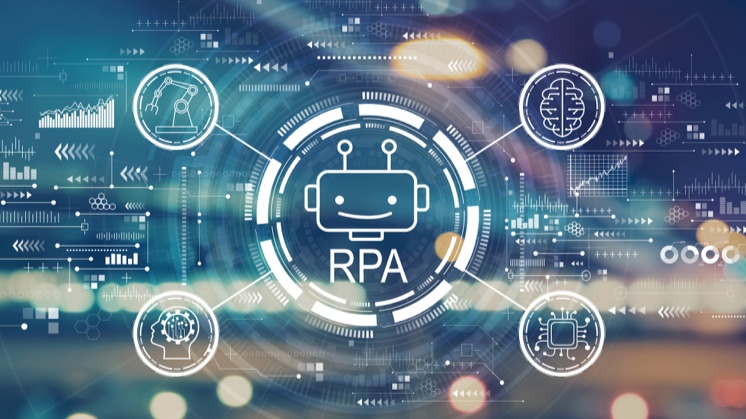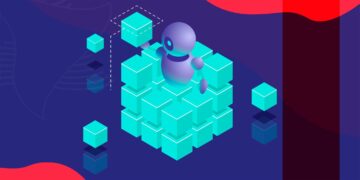Table of Contents
Robotic Process Automation (RPA) technology is changing how the world gets work done. Instead of people, software robots do repetitive and less motivating work, like logging into applications and systems, moving files and folders, extracting, copying, and inserting data, filling in forms, and completing routine analyses and reports. Advanced robots can even perform cognitive processes, like interpreting text, engaging in chats and conversations, understanding unstructured data, and applying advanced machine learning models to make complex decisions.

01
of 05
What is RPA?
Robotic Process Automation (RPA) uses intelligent automation technologies and software that facilitates the execution of repetitive office tasks. Software robots can do things like clicking buttons, entering data into systems, understanding what’s on a screen, completing the proper keystrokes, navigating systems, identifying and extracting data, and performing a wide range of defined actions, as they can recreate human activities in a practical, faster and simple way.
This type of automation uses rule-based software to carry out high-volume business process activities, freeing up people to focus on more complex tasks. RPA allows decision-makers to speed up their digital transformation initiatives and achieve a higher return on investment (ROI) from the technology and their teams.
You may or may not also have heard about hyperautomation, “a term used to describe the integration and use of advanced technologies, such as artificial intelligence (AI), robotic process automation (RPA), and machine learning (ML), to automate business processes.” It is a step beyond traditional automation, and you can read more about it in my article What is Hyperautomation? if you’re interested to know more.
02
of 05
The Benefits of Robotic Process Automation
RPA promotes a better workflow for your company, but the benefits are yet to be explored in this article. So, after all, what are the main benefits of RPA, and why does it make sense to implement it?
First of all, RPA is easy to configure as it has drag-and-drop, point-and-click, and action recording features that make it easier to onboard. Besides that, it can be rapidly implemented to accelerate digital transformation because software robots can easily access and work within legacy systems.
From a management perspective, it will increase productivity and ROI, as well as employee satisfaction and productivity, as it allows employees to reduce their workload to give attention to priority work. Also, it may relieve some of the employees’ frustration by eliminating activities that require repetitive work and a high-volume workload—this way, they can focus on strategic decision-making activities.
Focusing on the customer, when implementing RPA, you will see the satisfaction of customers rise because bots and chatbots can work 24 hours a day, so they may reduce waiting response times, leading to a higher rate of customer satisfaction.
Having a better compliance assurance and accuracy is one of the benefits when talking about RPA, because since you can program RPA according to specific workflows and rules, it’s possible to reduce human error.
Also, RPA can be adapted and used in many different sectors and industries so that is a big benefit for this technology, as we will see in the next chapter.
03
of 05
Where can RPA be used?
Several industries can leverage RPA technology to modernize and save time in their business operations, which raises the question of where it can be used.
- Healthcare: Some healthcare providers use RPA to manage information, prescriptions, and payment cycles, among other processes, as accuracy and compliance are paramount in this industry.
- Retail: E-commerce acceleration is part of the modern retail experience, and it is intrinsically linked with RPA tasks associated with the management of customer feedback warehouse and back office operations.
- Insurance: Insurance is a sector where RPA is very much used because it has many repetitive tasks well suited for automation, such as claims processing operations, compliance, and policy management.
- Finance: RPA automation solutions in banking and finance include KYC automation, account opening, inquiry processing, and anti-money laundering. They are needed because this sector has high-volume data entries, so they can reduce time and resources spent on these tasks.
Despite the examples shown, RPA can be applied to any high-volume, business-rules-driven, transport and data transfer, repeatable, and prone to error process.
04
of 05
Is RPA the same as artificial intelligence (AI)?
RPA is sometimes mistaken for artificial intelligence (AI), but they are not the same thing.
- AI bots use machine learning to recognize patterns and learn over time; while RPA bots work by following priorly defined processes. So, RPA is process-driven, AI is data-driven.
- Also, while AI proposes to simulate human intelligence, RPA only replicates human-directed tasks.
We can then conclude that although both technologies minimize human work, their methods of automating processes are different. They complement each other in different ways to achieve a common goal: making your company more efficient.
Let’s break down the key differences between AI and RPA to understand which is best suited for your needs.
-
Thinking Power:
- AI: The brains of the operation. It excels at complex tasks that require reasoning and decision-making, like recognizing patterns, predicting outcomes, and understanding natural language.
- RPA: The workhorse. It automates repetitive, rule-based tasks by mimicking human actions, such as data entry, form filling, and invoice processing.
-
Learning Curve:
- AI: Constantly evolving. AI learns and improves over time by analyzing data and feedback, eliminating the need for constant manual intervention.
- RPA: Sticks to the script. RPA follows pre-defined rules and doesn’t require complex algorithms or machine learning.
-
Data Dependence:
- AI: Data is its fuel. AI leverages large datasets and advanced algorithms like machine learning and deep learning to make intelligent decisions.
- RPA: No data science degree is required. RPA works without the need for massive datasets or complex algorithms.
-
Applications:
- AI: Ideal for complex tasks requiring intelligence, such as fraud detection, customer service chatbots, and even creative content generation.
- RPA: Perfect for streamlining routine tasks and improving accuracy, often used in finance, healthcare, and manufacturing for data entry, form processing, and more.
Both AI and RPA offer significant benefits, but they serve different purposes. AI tackles complex, data-driven tasks, while RPA streamlines repetitive, manual processes. The magic happens when you combine them, automating a wider range of tasks and boosting overall efficiency.
See this example by Forbes:
An Australian mutual bank needed to modernize how it investigated living expenses for assessing loans—the manual process was too time-consuming and error-prone. The bank first implemented a bot that could classify about half of a loan applicant’s transactions. This improved the fully manual process but still left a lot of hands-on work. By adding in a custom machine learning model, the bank can now automate about 90% of the work involved in generating living expense reports, improving the speed and accuracy of the loan application process.
05
of 05
How do you get started with RPA? Take the next step with us!
We understand that speeding up your digital transformation can be stressful and involve entering an unknown world. With our expertise, Stellaxius ensures a successful RPA implementation that delivers measurable benefits, enhances operational efficiency, and supports the company’s long-term automation goals.
Our certified Integration experts will help you discover the full potential of your integration strategy:
- Vision & Strategy Tailored for Automation: We’ll collaborate with you to define a clear vision for your integration roadmap, ensuring it aligns with your business goals. We’ll identify critical use cases where automation through Mulesoft and RPA can deliver maximum value to your organization.
- Deep Dive into Your Integration Landscape: We’ll assess your current business environment, including your data, technology stack, and workforce. This comprehensive evaluation will help us understand your unique needs and challenges.
- Building Your Integration Powerhouse: With a deep understanding of your requirements, we’ll design and implement a best-in-class integration solution leveraging Mulesoft and RPA. This solution will address your specific challenges and open doors to new opportunities for automation and efficiency.
- Run & Operate with Confidence: We’ll empower your team to become self-sufficient in managing your integration environment. We’ll also help you define a clear operational strategy to ensure you maximize the ongoing value of your investment.
Contact us today to learn more about how we can help you realise your full potential.
You can also find more information about how MuleSoft can help with your digital transformation. Subscribe to our Knowledge Center so you never miss a new article.






